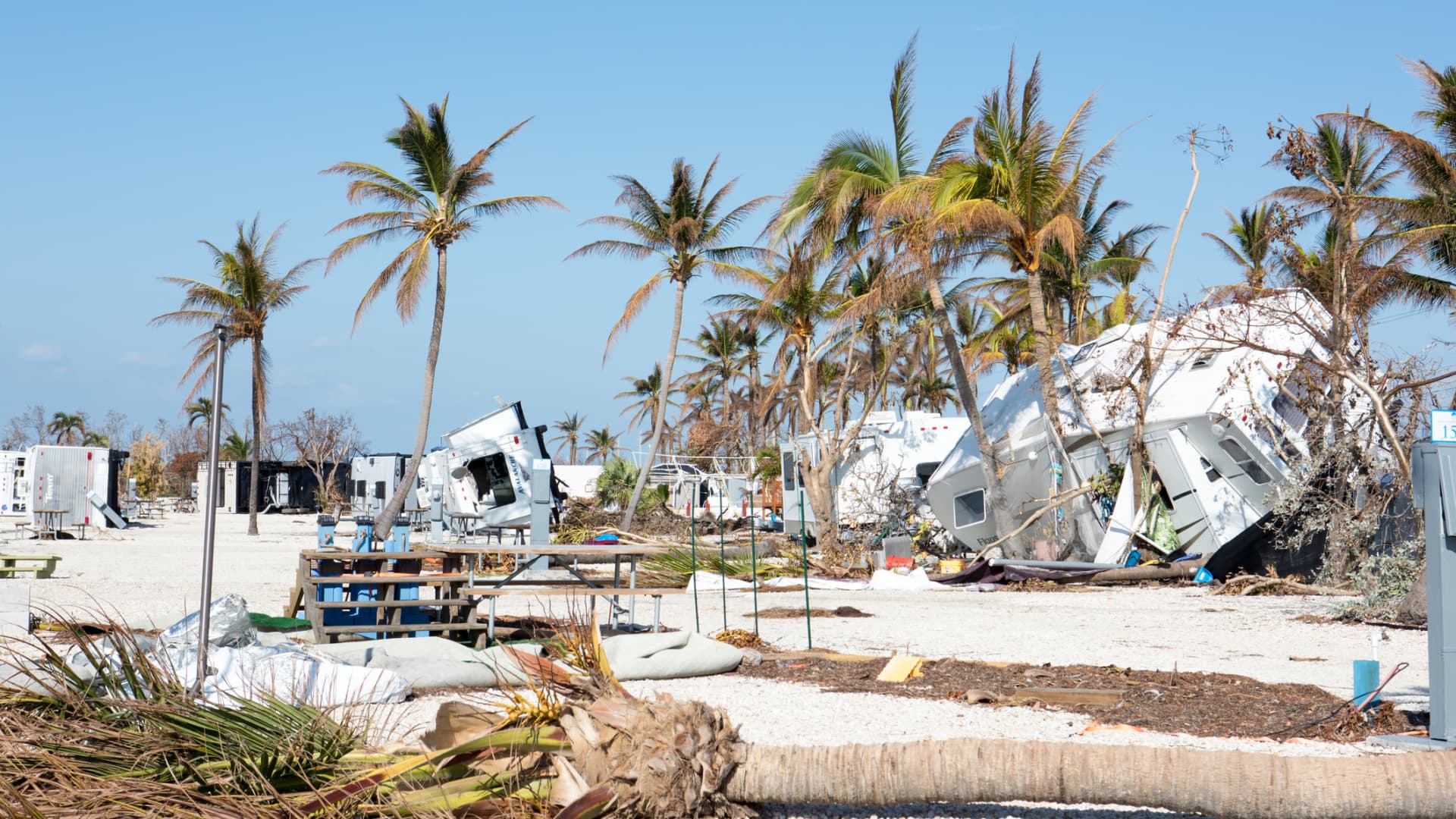More than 18 million rental units are located in areas exposed to extreme weather hazards, according to the American Rental Housing Report from Harvard University’s Joint Center for Housing Studies.
That exposure isn’t spread evenly. While most states have at least one “high-risk” county with 2,000 or more rental units, many are concentrated in California and Florida.
Harvard researchers paired data from the Federal Emergency Management Agency’s National Risk Index with the five-year American Community Survey to find out what units are in the areas that are expected to have an annual economic loss from environmental disasters such as wildfires, flooding, earthquakes, hurricanes and more.
A high-risk area is one with a “relatively moderate,” “relatively high” or “very high” expected annual loss.
“What the map is showing is the number of rental units that are located in areas that have at least moderate risk,” said Sophia Wedeen, a research analyst focused on rental housing, residential remodeling and affordability at the Joint Center for Housing Studies.
How many rentals are at risk in California and Florida
Harvard researchers found the number of rental units exposed to climate hazards in the U.S. by combining an area’s risk of economic loss from natural disasters with the number of rental units in those areas, Wedeen said.
Florida, for example, has many rental units as well as census tracts, or neighborhoods, that FEMA identified as having at least moderate risk, Wedeen said. The state appears as a hot spot as a result. The same applies for areas in California.
More from Personal Finance:
What tenants should know to make rent improve credit
Three ways Gen Zers can boost credit before renting
‘Housing affordability is reshaping migration trends’
California has 4.6 million rental units, or 77% of the state’s rental stock, located in census tracts or neighborhoods that are estimated to face annual economic losses through climate-related hazards.
Florida has 2.4 million rental units at risk, or about 89% of its rental stock, according to the Harvard study.
How renters can protect themselves
As more areas in the U.S. become further exposed to climate-related risks, it will be important for renters to consider renters insurance and understand what such policies cover, experts say.
To that point, landlords and building owners are responsible for any physical damage to the building or unit caused by natural disasters. But their property insurance does not cover a tenant’s personal belongings.
Renters insurance policies usually cover losses or damages to a tenant’s personal property and some even cover living expenses if a tenant needs temporary housing during a unit’s repair.
Renters should check what type of disasters are included in their renters insurance policy. They may need riders or a separate policy to cover risks such as flooding or earthquakes, experts say.
Additionally, renters may want to shop around for insurance plans before signing a lease in an at-risk area. Homeowners in some areas are struggling to find coverage as major insurers leave some markets exposed to fires and floods.
“The best thing that renters can do is make sure what types of products are available to protect their property but then also … understand risk,” said Jeremy Porter, head of climate implications research for First Street Foundation.
Renters should understand the climate risks of buildings they live in and make informed decisions, Porter explained.
Don’t miss these stories from CNBC PRO:
- Three stocks that could replace Tesla in the ‘Magnificent 7’
- Morgan Stanley hikes Nvidia price target ahead of earnings: ‘AI demand continues to surge’
- Vanguard launches two new ETFs to hit this sweet spot of tax-free fixed income
- Berkshire Hathaway topped $600,000 a share last week, aiming at $1 trillion market value
